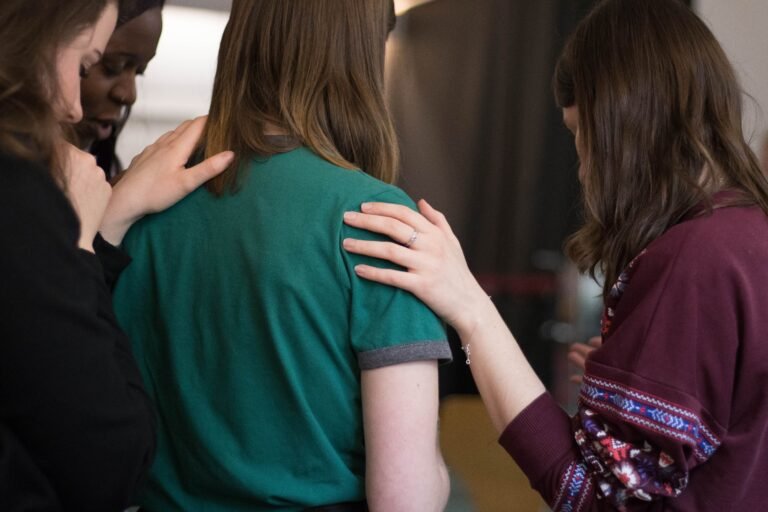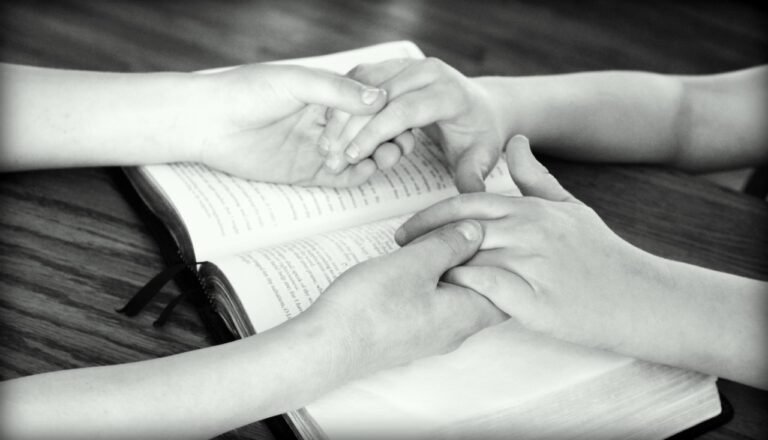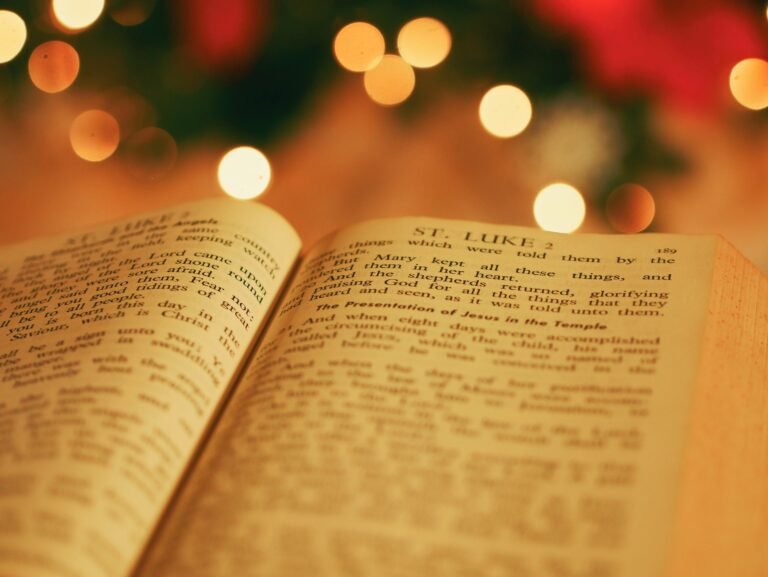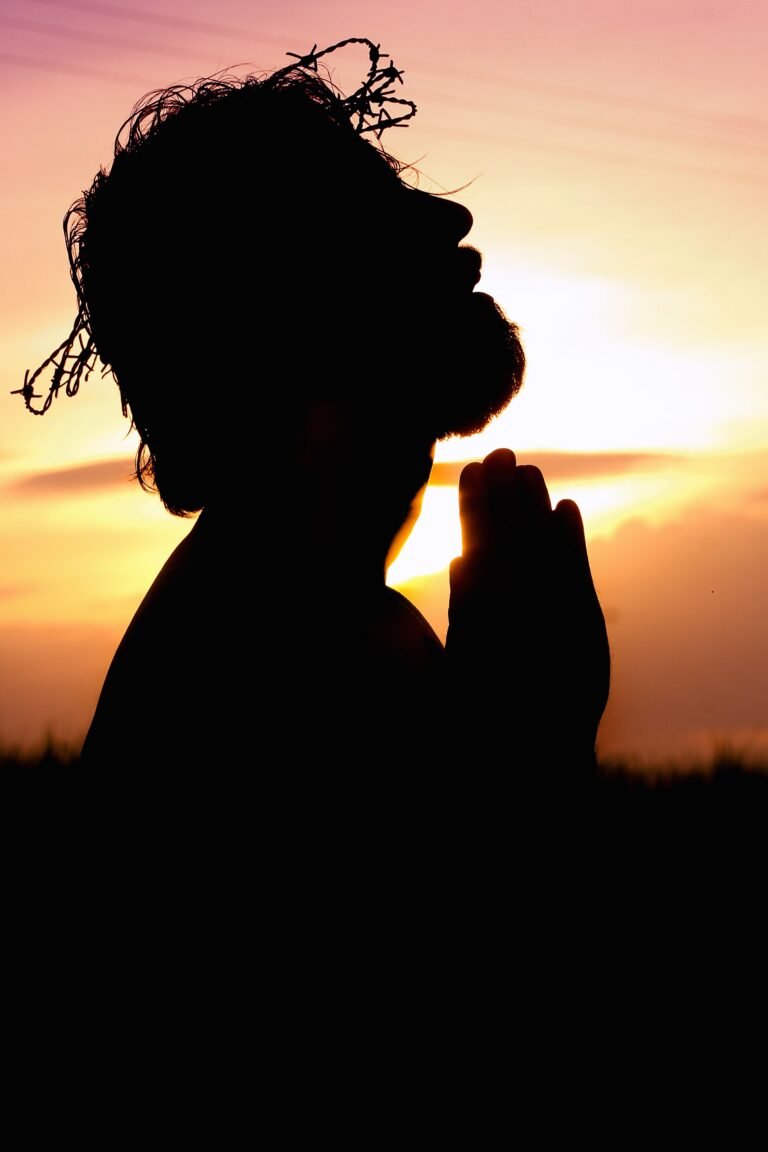Understanding The Catholic Mass
So, you’re curious about the Catholic Mass? Well, you’ve come to the right place! In this article, we’ll take a closer look at the Catholic Mass. We’ll explore the different elements and rituals that make up this sacred ceremony, giving you a better understanding of its significance and importance to the Catholic faith. Whether you’re a member of the Catholic community looking to deepen your knowledge or simply intrigued by this centuries-old tradition, join us as we unravel the beauty and meaning that will aid in understanding the Catholic Mass.
Overview of the Catholic Mass
What is the Catholic Mass?
The Catholic Mass is the central act of worship in the Catholic Church. It is a sacred ritual that commemorates the Last Supper of Jesus Christ with his disciples and the offering of his body and blood. The Mass is not just a simple gathering, but a profound encounter with the divine. It consists of two main parts: the Liturgy of the Word and the Liturgy of the Eucharist.
The Importance of the Catholic Mass
The Catholic Mass holds great significance for Catholics as it allows them to enter into communion with God. It provides a space for worship, reflection, and spiritual nourishment. It is through the Mass that Catholics believe they receive the grace of Christ and are united with the larger body of believers. The Mass is a source of spiritual strength, enlightenment, and a means of growing closer to God.
The Structure of the Catholic Mass
The Catholic Mass follows a structured format that has evolved over centuries. It begins with the introductory rites, followed by the Liturgy of the Word, the Liturgy of the Eucharist, and concludes with the concluding rites. Each part has its own distinct elements and rituals that contribute to the overall worship experience.
The Liturgy of the Word
The Reading of the Scriptures
The Liturgy of the Word focuses on the reading and proclamation of the Scriptures. It typically involves an Old Testament reading, a Psalms response, a New Testament reading, and finally, the Gospel reading. These readings are carefully selected and reflect the themes of the liturgical season or feast. The readings are meant to be meditated upon and provide spiritual guidance and inspiration.
The Homily
Following the Scripture readings, a priest or deacon delivers a homily, which is a sermon or reflection on the readings, their relevance to the present moment, and practical applications for daily life. The homily aims to provide a deeper understanding and interpretation of the Scriptures, fostering personal growth and spiritual reflection.
The Creed
The Creed, specifically the Nicene Creed, is a profession of faith where the assembly declares its beliefs in the central doctrines of the Catholic Church. It is a unifying statement that reaffirms the core principles of Catholicism, such as the belief in the Holy Trinity and the divinity of Jesus Christ. Reciting the Creed helps Catholics to unify their beliefs and strengthen their spiritual bonds with one another.

The Liturgy of the Eucharist
The Offertory
During the Offertory, the faithful present their gifts of bread and wine, which will be consecrated and transformed into the body and blood of Christ. This act symbolizes the offering of themselves and their lives to God. The priest offers prayers of blessing over the gifts, and the congregation joins in singing hymns of praise and thanksgiving.
The Eucharistic Prayer
The Eucharistic Prayer is the most significant part of the Mass. It is a prayer of thanksgiving and the consecration of the bread and wine into the body and blood of Christ. The priest, acting in the person of Christ, recites the prayer and the congregation joins in silent prayer and witnessing the transformation of the elements. This moment is the pinnacle of the Mass, as Catholics believe they are truly receiving the presence of Christ.
The Communion Rite
The Communion Rite is when the faithful partake in the body and blood of Christ. Through the reception of the Eucharist, Catholics believe they are being nourished by the spiritual food of Christ and are entering into a deeper communion with God. The congregation approaches the altar to receive the Eucharist, either by hand or on the tongue, and it is customary to bow or genuflect before and after receiving.
Sacramentals and Traditions
The Sign of the Cross
The Sign of the Cross is a gesture that Catholics make at the beginning and end of prayers and other worship rituals. It involves tracing a small cross shape on one’s body, typically from the forehead to the chest and then from the left shoulder to the right shoulder. This action symbolizes the invocation of the Holy Trinity and expresses one’s devotion and commitment to Christ.
The Use of Incense
Incense is often used during Catholic Masses to create an atmosphere of reverence and to symbolize the prayers of the faithful rising to heaven. It is typically burned in a censer or thurible and is accompanied by the chanting or singing of hymns. The use of incense adds a sensory element to the Mass, enhancing the worship experience and inviting a deeper connection with the divine.
The Holy Water
Holy water is blessed water used for various sacraments and blessings in Catholicism. It is often found in fonts near the entrance of the church, and Catholics typically dip their fingers into the holy water and make the sign of the cross as a reminder of baptism and a means of invoking God’s blessing. The use of holy water serves as a purification ritual and a way of sanctifying oneself before and after entering the church.
Liturgical Vestments
Priests and other clergy members wear specific garments called liturgical vestments during the Mass. These vestments hold symbolic meaning and help distinguish the clergy from the laity. The vestments include the alb, a long white robe representing purity, the stole, a long scarf worn around the neck symbolizing priestly authority, and the chasuble, a colored outer garment representing the liturgical season. These vestments serve as visual reminders of the sacredness of the Mass and the role of the clergy.
The Use of Candles
Candles play a significant role in the Catholic Mass, symbolizing the light of Christ and his presence. Candles are commonly used during the liturgy to illuminate the altar, statues, and the highlighted Gospel book. The candles create an atmosphere of reverence and serve as a visual reminder of the spiritual illumination sought during the Mass.

The Importance of Participation
Active Participation
Active participation is encouraged during the Catholic Mass. This means fully engaging in the prayers, responses, hymns, and gestures of the liturgy. The faithful are called to offer their own personal prayers, attentively listen to the Word of God, participate in the singing, and make the appropriate responses during the Mass. Active participation is believed to deepen one’s connection with God and enhance the communal worship experience.
The Role of the Priest and Deacons
The priest and deacons have specific roles and responsibilities during the Mass. The priest acts in the person of Christ, presiding over the liturgy, consecrating the bread and wine, and delivering the homily. Deacons assist the priest and are entrusted with specific tasks, such as proclaiming the Gospel, assisting with the distribution of the Eucharist, and attending to other liturgical needs. The priest and deacons serve as spiritual guides and leaders, facilitating the congregation’s encounter with God.
The Role of the Laity
The laity, or the non-ordained members of the Church, also have an important role in the Catholic Mass. The laity actively participates through prayer, singing, and responding during the liturgy. They also serve in various ministries, such as serving as lectors, extraordinary ministers of Communion, and altar servers. The laity’s involvement enriches the Mass and fosters a sense of shared responsibility in worship and service.
The Universal and Apostolic Church
The Unity of the Church
The Catholic Mass emphasizes the unity of the Church, both within the local community and on a universal level. Despite cultural and geographical differences, the Mass serves as a celebration that unites Catholics worldwide. The prayers, rituals, and liturgical calendar are the same regardless of the location, creating a sense of belonging and unity among Catholics.
The Apostolic Succession
The Catholic Mass is deeply rooted in the ancient tradition of apostolic succession. This means that the authority and teachings of the Church can be traced back to the Apostles and ultimately to Jesus Christ. The laying on of hands and the passing down of leadership from one generation of bishops to the next ensure the continuity and authenticity of the Catholic Mass. This apostolic succession is believed to preserve the faith and teachings of Christ throughout history.

Devotional Practices
The Rosary
The Rosary is a popular devotion in the Catholic Church that involves the repetitive prayer of specific prayers, including the Our Father and Hail Mary while contemplating the mysteries of the life of Christ. Many Catholics incorporate the Rosary into their personal prayer life or participate in group Rosary recitations, either before or after Mass. The Rosary is seen as a powerful tool for meditation, intercession, and deepening one’s connection with Mary, the mother of Jesus.
Adoration of the Blessed Sacrament
Adoration of the Blessed Sacrament refers to the practice of reverencing and praying before the consecrated Eucharist outside of Mass. The Eucharist is placed in a special vessel called a monstrance and displayed for adoration. Catholics believe that the consecrated host is the real presence of Christ, and adoration provides an opportunity for contemplation, thanksgiving, and personal encounters with Jesus.
Novenas
Novenas are nine-day periods of prayer and devotion leading up to a specific feast or intention. Catholics often participate in novenas as a way to seek intercession, express gratitude, or petition for specific needs or intentions. Novenas involve daily prayers, reflections, and devotional practices centered around a particular saint, holy event, or aspect of the Catholic faith. They offer a structured and focused approach to personal prayer and deepen one’s relationship with God.
The Stations of the Cross
The Stations of the Cross, also known as the Way of the Cross, is a devotional practice that commemorates the events leading up to Jesus’ crucifixion. The Stations typically consist of fourteen images or representations, called stations, that guide participants through each stage of Jesus’ journey to Calvary. Catholics often engage in this devotion during Lent, reflecting on Christ’s sacrifice and offering prayers and meditations at each station. The Stations of the Cross help Catholics to reflect on the suffering and love of Christ and provide a way to connect with his sacrifice on a personal level.
The Liturgical Calendar
Advent
Advent is the liturgical season preceding Christmas and is a time of joyful anticipation and preparation for the coming of the Lord. It lasts for four weeks and involves special prayers, readings, and rituals. The Advent wreath, with its four candles symbolizing hope, peace, joy, and love, is a significant visual representation of this season. Advent is a time for reflection, repentance, and renewal, as Catholics await the celebration of Christ’s birth.
Christmas
Christmas is the central feast of the Catholic liturgical calendar, celebrating the birth of Jesus Christ. The Christmas season begins with the vigil Mass on Christmas Eve and concludes with the feast of the Baptism of the Lord. During this season, Catholics commemorate the Incarnation of God, reflecting on the mystery of Jesus’ birth and the immense love expressed in the Nativity.
Lent
Lent is a season of penance, preparation, and spiritual reflection lasting for forty days, excluding Sundays, leading up to Easter. It is a time for Catholics to engage in prayer, fasting, and almsgiving as acts of self-discipline and spiritual growth. Lent provides an opportunity for personal conversion, examining one’s relationship with God, and deepening the understanding of Christ’s sacrifice.
Good Friday
Good Friday is a solemn day in the Catholic calendar commemorating the crucifixion and death of Jesus Christ. Catholics engage in special liturgies and rituals, including the Stations of the Cross and the Veneration of the Cross. It is a day of mourning, reflection, and gratitude for the sacrifice Jesus made for humanity’s salvation.
Easter
Easter is the most important feast in the Catholic liturgical calendar, celebrating the resurrection of Jesus Christ from the dead. The Easter Vigil, held on Holy Saturday night, is a highlight of the Easter season, during which Catholics participate in the Liturgy of Light and experience the joy of Christ’s resurrection. Easter represents the triumph of life over death and serves as a source of hope and renewal for all believers.
Pentecost
Pentecost is the feast that commemorates the descent of the Holy Spirit upon the Apostles after Jesus’ ascension into heaven. It marks the birth of the Church and is considered the birthday of Christianity. Pentecost Sunday is a time for celebrating the Holy Spirit’s presence and guidance in the life of the Church. Red liturgical vestments are often worn, symbolizing the Holy Spirit’s fire and empowering the faithful.
Ordinary Time
Ordinary Time refers to the periods of the liturgical year outside of the major seasons, such as Advent, Christmas, Lent, Easter, and Pentecost. It is a time for growth, ordinary grace, and spiritual development. The color green is used during Ordinary Time, symbolizing hope, life, and growth. Catholics engage in regular religious practices, attend Mass, and continue their journey of faith during this uninterrupted time.
Challenges and Controversies
The Use of Latin
The use of Latin in the Catholic Mass has been a topic of controversy and debate. Prior to the Second Vatican Council, Mass was predominantly conducted in Latin. However, after the Council, Mass was translated into local languages to enhance the understanding and participation of the faithful. While Latin remains a significant part of the Catholic Church’s tradition, its use in the Mass today varies depending on the local context and preferences of the community.
The Changes Brought by Vatican II
The Second Vatican Council, held from 1962 to 1965, brought about significant changes in the Catholic Mass. The Council sought to renew and update the Church’s liturgy, making it more accessible and relevant to the modern world. The Mass was revised, allowing for greater participation of the laity, the use of vernacular languages, and a deeper emphasis on Scripture. While the changes were made with the intention of revitalizing the Church, they also sparked discussions and debates about the impact on tradition and continuity.
The Role of Women in the Catholic Mass
The role of women in the Catholic Mass has been a subject of ongoing discussion and reflection. While women are actively involved in various ministries within the Church, including lectors, altar servers, and extraordinary ministers of Communion, there are limitations on their participation in certain liturgical roles. The question of women’s ordination as priests remains a controversial and unresolved issue within the Catholic Church.
The Catholic Mass in Practice
Sunday Mass
Sunday Mass is the central weekly gathering for Catholics, and it fulfills the obligation to attend Mass. The Sunday Mass typically includes a full celebration of the Liturgy of the Word and the Liturgy of the Eucharist, and it provides an opportunity for communal worship and spiritual nourishment. Catholics gather as a community to give thanks, listen to God’s Word, receive the Eucharist, and strengthen their bonds of faith.
Daily Mass
Daily Mass is an optional practice that allows Catholics to receive the Eucharist and participate in the liturgy on weekdays. It provides an opportunity for deeper spiritual engagement throughout the week, away from the distractions of daily life. Daily Mass is often attended by those seeking additional spiritual sustenance, as well as by priests, religious, and devout followers of the faith.
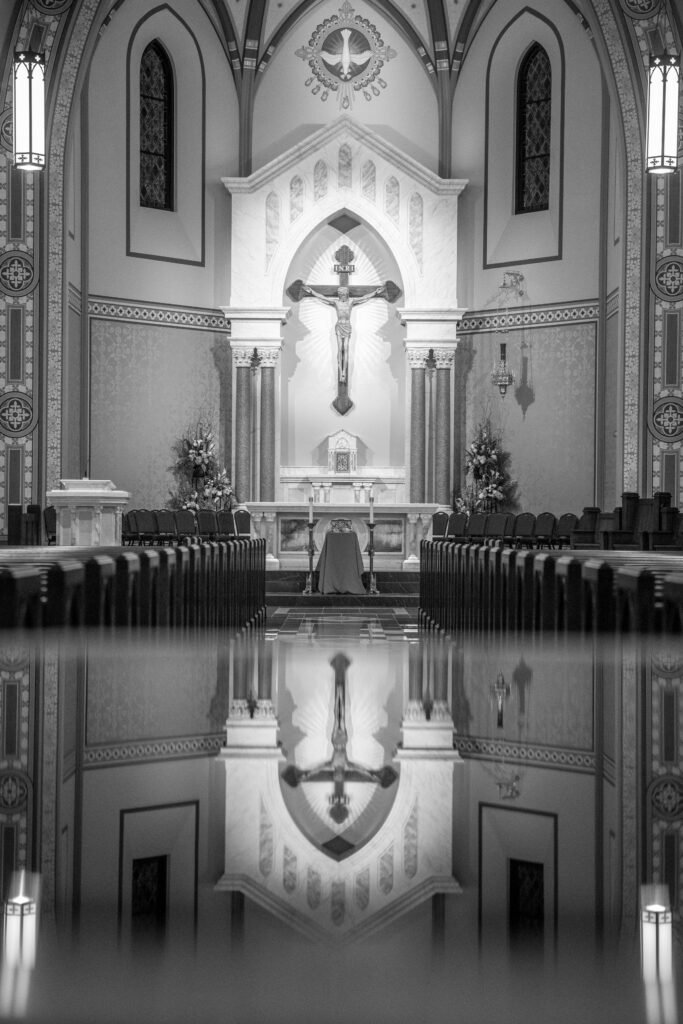
Mass in Different Languages
The Catholic Mass is celebrated in various languages around the world, reflecting the diverse cultures and communities of the Church. While the core structure and rituals remain the same, the use of local languages facilitates deeper understanding and participation. The Mass in different languages helps to foster a sense of inclusivity and promotes the universality of the Catholic faith.
The Rite of Mass for the Dead
The Rite of Mass for the Dead, also known as the funeral Mass, is a specific form of the Catholic Mass offered for the repose of the soul of a deceased person. It provides an opportunity for family, friends, and the community to come together, offer prayers of support, and commend the deceased to God’s mercy. The funeral Mass offers hope in the resurrection and offers consolation to those mourning the loss of a loved one.
In conclusion, the Catholic Mass is a rich and multifaceted liturgical celebration that holds great importance and significance for Catholics. It provides a pathway for encountering God, deepening one’s spirituality, and fostering a sense of unity within the Church. The structure, rituals, and devotional practices associated with the Mass contribute to the richness and diversity of Catholic worship. Whether attending Sunday Mass, daily Mass, or participating in devotions and traditions, the Catholic Mass remains a central pillar of the faith, guiding believers on their journey towards God.

